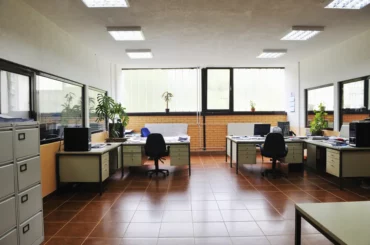The COVID-19 outbreak has crippled the world’s economy. No one ever thought that a tiny virus could shut operations all over the world. Each country has been tackling this situation since December 2019 in the best interest of its citizens and businesses. One of the common solutions has been country-wide lockdowns.
Though implementing country-wide lockdowns was effective in saving millions of lives, it also wreaked financial havoc around the globe. The lockdown has negatively impacted many small and medium businesses in India as well.
Since India has now entered the stage of Unlock 1.0, it’s very important for small businesses to have a recovery plan. This plan will help them return to normalcy or to sustain in the new normal. If you have not figured out a plan yet, this guide will help you get your business up and running after the pandemic.
Assess your financial damage from COVID-19
The first and foremost step of the recovery plan is to assess the quantum of the effect caused to your small business by the COVID-19 outbreak.
There are different layers involved in such financial assessment, starting with the hard numbers. It will be helpful to update your financial statements such as profit and loss accounts or cash flow statements. You can then compare them to last year’s figures to know how much your business has been affected.
Apart from these hard numbers, there are other layers that might have affected your business. For instance, if you’ve laid-off employees or workers, you will have to factor that into your recovery plan. Also, you might have cut your advertising costs, or some of your trusted customers might have migrated towards competitors. You will have to account for all these factors to calculate financial resources to help you recover fast.
Suggested read: 7 Ways E-Commerce Businesses Can Ensure Continuity During COVID-19
Your business plan might need a second look
Your existing business plan might have worked for you in the pre-COVID era, but it might need some fine-tuning to grow in this new normal.
You may need to analyse how your business plan can be tweaked to adapt to the new normal and flourish. For example, if you were dependent on foot traffic for your sales, you may need to expand your business digitally and attract new customers who are shopping from home now.
Many organisations are trying to guide and provide requisite resources to small business owners looking to rebuild their business. We, at Razorpay, can provide you with a full payment solution for your business too. This will help you collect your payments digitally and maintain social distancing at the same time.
To start with, you should analyse the pandemic’s impact on your industry. This can be done by studying your competitor’s practices, ongoing trends and consumers’ behaviours.
The new business plan should align with your business’s strengths and weaknesses. Take a look at factors that were working in good old times, but may not work well now and adjust them to remain competitive.
One of the most important factors is to revisit your business goals and try to set realistic goals, given the current situation. For instance, if you own a small cloth manufacturing unit, you will have to scale down the revenue target set for the upcoming quarters since the majority of your consumers are working from home and will not be interested in buying new clothes.
Your business might need funds to recover after COVID-19
Unless a small business owner has a hidden treasure at home, it is very likely that the business will need some funding to restart its operations.
There are several financing options that you can consider for your business. The government has also recently announced relief measures for small and medium businesses in India.
Also Read: Relief Measures by Government of India for Businesses During COVID-19
Short-term business loans, business line of credit, business credit cards are some of the options that you might want to consider. You can avail these through banks and other lenders. Review your business and personal credit scores and keep your financial statements ready before you apply for any financing option. This can help you with smoother application approval.
Revisit your budgeted amount for spends
The early stages of recovery may lead to more spending than revenue. You should prioritise expenses to make most of the revenue coming in. The focus should be to eliminate the waste of money and prepare a lean operational budget for the business.
Set up a timeline for revival
There are several action items to be completed to fully recover from COVID-19 outbreak, but doing everything at once might spoil the plan.
For a small business that was closed due to the pandemic, your immediate goal should be to secure funds for your business. Once this is figured out, you can consider rehiring employees and follow it by stocking up your inventory. The step-by-step approach will help you plan accordingly.
In the initial days of recovery, we would recommend you to track your progress weekly to analyse what’s working and what’s not. You can shift to monthly or quarterly reviews later once things start to stabilise.
Be prepared for any next big crisis
We shall promise to not take anything for granted in future. While the pandemic may seem like a once-in-a-lifetime experience, the reality is that any unpredicted situation can disrupt your small business.
The COVID-19 outbreak has taught us to always have a contingency fund that can help you and your business sustain and move further. You can create this fund by trimming down your unnecessary operating expenses.
All of us are going through hard times now. Let’s recover and rebuild our businesses while adapting to the new normal. We are there to provide you with an all-in-one payment solution for your business. All you have to do is just sign up on our website!






2 Comments
Good
Hi H Sneha,
Thank you so much.